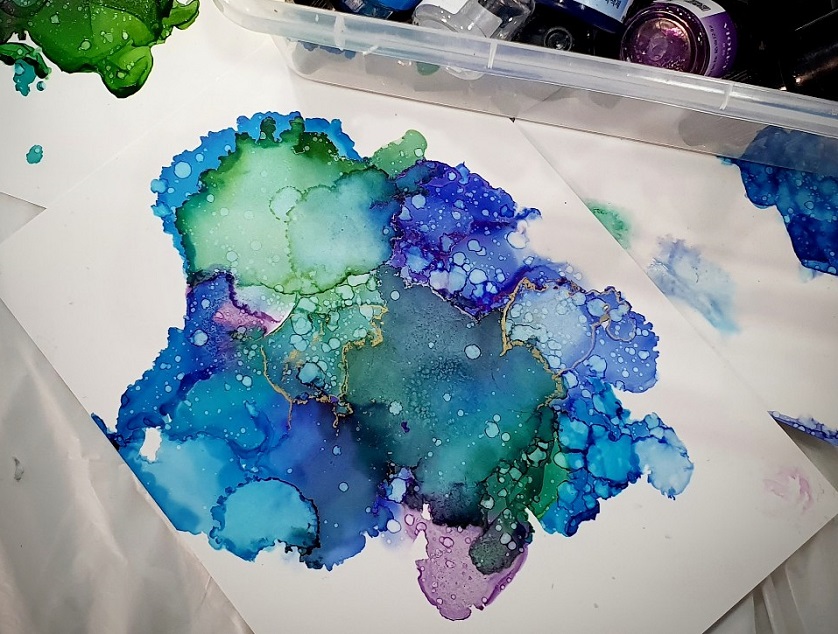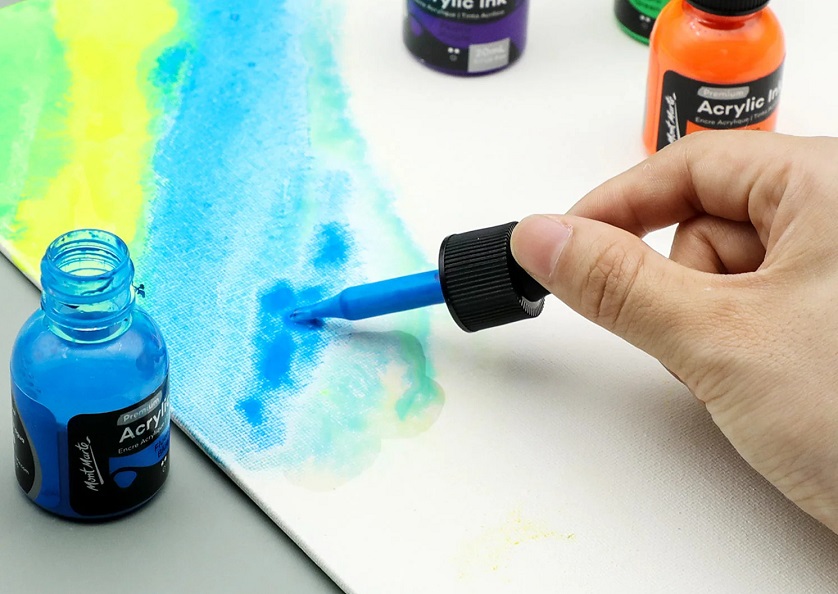The process of drawing and painting offers endless possibilities for creative expression. But within this colourful landscape, artists’ inks stand out as unique tools, capable of breathing life onto your canvas with unparalleled vibrancy and flair. Unlike traditional paints, inks offer a world of transparency, fluidity, and a spectrum of effects that can transform your artwork into mesmerising expressions.
Contents
Exploring the World of Inks

Within the artist’s toolbox, a universe of colour awaits in the form of vibrant artists ink selection to help you start on your artistic creation. Unlike their print counterparts, inks offer a unique set of properties that unlock a world of creative possibilities. Let’s delve into the fascinating world of inks, exploring their types and how they differ from paints.
Types of Artist Inks
When it comes to artistic expression, the world of inks offers an array of options to explore. Understanding the characteristics and applications of different ink types opens doors to limitless creativity.
- India Ink is famous for its permanence and waterproof qualities, India ink is a staple in the artist’s toolkit. Its rich black pigment and resistance to fading make it ideal for detailed drawings and illustrations that demand longevity.
- Coloured Drawing Inks are bursting with vibrant hues and versatility, coloured drawing ink adds a splash of excitement to any artwork. Whether used as standalone mediums or mixed with water for subtle washes, these inks offer endless possibilities for experimentation and expression.
- Alcohol Inks are known for their fast-drying properties and vibrant colour payoff, alcohol inks are favoured by artists exploring bold, abstract techniques. Their fluid consistency and ability to create unique textures make them perfect for creating dynamic effects on non-porous surfaces.
- Speciality Inks go beyond the staples, speciality inks like calligraphy inks and gouache inks offer niche applications for artists seeking to expand their repertoire. Calligraphy inks boast fluidity and smooth flow, perfect for intricate lettering and decorative scripts, while gouache inks offer the opaque coverage and reworkability of traditional gouache paints in liquid form.
Essential Tools
In the world of ink-based artistry, the choice of tools is paramount, each serving as a conduit for creativity and precision. Dip pens, both technical and traditional, stand as venerable instruments in the artist’s toolkit. Technical dip pens offer precision and control, ideal for intricate linework and detailed illustrations. Traditional dip pens, with their nibs, dipped in ink, provide a tactile connection to the medium, allowing for expressive strokes and flourishing lines.
Fountain pens offer a modern twist on art ink application, combining convenience with elegance. Their smooth flow and consistent ink delivery make them a favourite among artists seeking fluidity and ease of use. Brushes, in their various forms and sizes, offer unparalleled versatility in ink application. From fine detailing to bold strokes, brushes adapt effortlessly to the artist’s hand, allowing for a range of expressive mark-making.
Masking fluids and friskets emerge as invaluable aids for creating sharp lines and reserved areas in ink-based artworks. These masking agents shield designated areas from ink application, facilitating the creation of crisp edges and intricate designs.
Mastering Ink Techniques
Washes, characterised by translucent layers of ink diluted with water, create subtle gradients and atmospheric effects, adding depth and dimension to artworks. Linework, whether delicate and precise or bold and expressive, defines the structure and character of an artwork. With practised precision, artists navigate the canvas, imbuing each stroke with intention and personality. Layering introduces complexity and richness to compositions, as successive applications of ink build upon one another, creating depth and complexity.
Splattering, a technique of flicking or spattering ink onto the canvas, injects spontaneity and energy into artworks, adding texture and visual interest. Water control techniques, such as blooms and bleeds, harness the fluid nature of ink, allowing artists to manipulate and guide its flow. By mastering the art of water control, artists achieve desired effects, from soft transitions to dramatic contrasts, in their ink-based creations.
Choosing the Right Inks for You

Selecting the perfect artist inks is a crucial step in the creative process, as it lays the foundation for the visual journey ahead. Here, we illuminate key factors to consider when navigating the vast array of ink options available to artists.
Desired Effect
Consider the effect you wish to achieve in your artwork. Are you drawn to bold, opaque colours that command attention, or do you prefer delicate, translucent washes that evoke a sense of ethereality? Understanding your desired aesthetic allows you to select inks that align with your artistic vision, whether it be bold and expressive or subtle and nuanced.
Compatibility
Ensure that your chosen art inks are compatible with the paper and other mediums you intend to use. Different papers absorb ink differently, influencing factors such as drying time, colour saturation, and overall appearance. Similarly, consider how your chosen inks interact with other mediums, such as watercolours or acrylic paint, to achieve seamless integration and harmonious results.
Lightfastness
For artwork intended for display or archival purposes, prioritise inks with high lightfastness ratings. Lightfastness refers to an ink’s ability to resist fading when exposed to light over time, ensuring the longevity and preservation of your artwork. Opting for lightfast inks guarantees that your creations will retain their vibrancy and integrity for years to come.
Recommendation
For artists embarking on their ink-based journey, we recommend starting with a basic set of inks that offer versatility and ease of use. Begin with a selection of primary colours, along with black and white, to provide a solid foundation for experimentation and exploration. As your skills develop and your artistic voice evolves, venture into new colours, techniques, and mediums, allowing your creativity to flourish and evolve organically.










